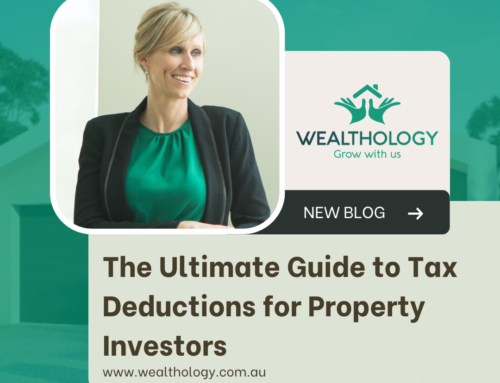An alternative option to purchasing a property as a home, rentvesting has become a popular option for those wanting to purchase property. At first, it might not seem to make sense – why pay off a mortgage and rent at the same time? Wouldn’t it just be easier to buy your home?
As someone who has used the rentvesting strategy for several property purchases, I’m a big fan. Let me explain…
Rentvesting Explained
Rentvesting is a home-owning strategy where you rent a property to live in that’s right for your lifestyle, while you own an investment property that’s right for your budget.
Often, rentvesters will buy an investment property or multiple properties in suburbia, rural or regional areas where house prices are typically lower than in the CBD and surrounding areas. They will then rent a property in the CBD or inner-city suburbs where they can enjoy the benefits of a city lifestyle.
One of the top reasons why rentvesting is popular is because you can use the income from the property that you purchased as an investment to pay for your rent and support the lifestyle you want.
As home prices in inner-city areas have gone up, this strategy is increasingly popular, especially among younger buyers and one which I’ve used myself for many years.
What are the Benefits of Rentvesting?
Rentvesting enables investors to get into the market earlier, at a younger age and with less money than if they were buying outright. It also means that there will be less pressure on them in terms of having enough capital available for them to buy a home later in life.
With rentvesting, investors can use their rental income as well as any other investments that they make to help pay for their home loans instead of relying solely on their salary or other regular income sources like pensions or social security benefits etcetera.
Advantages of Rentvesting
- Rentvesting gets you into property sooner. When you buy property for wealth creation, you should ideally chase capital growth. Capital growth needs time to work effectively, which means that buying today, rather than in 2 – 5 years from now while you wait to accumulate a deposit or grow your income. It is an essential step to successfully growing your future wealth.
- You can choose a financial structure that allows for a smaller deposit (less than 20%). If properly structured, a smaller deposit for an investment loan is still a feasible tactic as long as the mortgage is offset by the rental income. You don’t want an asset that is a crippling financial burden. A knowledgeable mortgage broker can help you calculate your minimum deposit requirements in line with your financial situation so you’re comfortable with your repayments.
- You can choose an investment property in your budget, without location constraints. Your investment property doesn’t have to be in the same neighbourhood as you – far from it infact. It might be interstate! Before you buy, you should create a plan based on long-term goals, and then find a property that fits in with your strategy. For example, you might decide that you’re going to build a new duplex to bolster tax deductions and generate duplicate rent, like I did. Or, you might buy purely for capital growth, but choose a location near a different city where prices are within your means. It’s always good to invest in the next ‘about to boom’ market by following the property cycles. As a Rentvestor, you’re not limited to live where you can afford to buy.
- You can live in a location you can’t afford to buy. Like me, I worked in the inner-city and didn’t’ want to travel an hour to work so I rented close to work in an exciting area of town and purchased an investment property in suburbia. I then had the flexibility to move without significant expense, which can be beneficial to those who move around for work, or when personal circumstances change.
- Tax deductions from the investment property help to offset the mortgage repayments. Numerous expenses related to your investment property will be tax deductible, including improvements and repairs you make along the way. Even your property manager’s fees are tax deductible, along with the interest charged for loans, rental costs like insurance and advertising, and depreciation costs. The Australian Tax Office explains when you can make these claims.
- Without a large mortgage to pay, you can save for your own home (or next investment property). If circumstances allow, rentvesting can create more margin in your finances so you can put money aside – and all the while, your investment property is growing in value and being paid down by your tenant. When you have an investment property, you have guaranteed rental income. You can use this income from leasing out your investment property to pay down the mortgage on the property, save for your own home or to help pay towards the rent on the place you’re living.
- Allows you to generate wealth. When your investment property increases in value, you could sell it at a profit down the road. You can also use the income generated from leasing out your investment property to pay down the mortgage on the property or to cover your rental costs in your primary property.
- Protect yourself from inflation. Also, investing in real estate can protect you from inflation given that property values typically rise in accordance with inflation.
One important consideration is the yield of a property, which you can calculate by dividing the rent you receive over a year by the price you paid for the property which is then multiplied by 100. For example, if you purchased a property for $500,000 and are renting it out for $500 per week, which is $26,000 per annum, the gross yield would be 5.2% per annum.
Understanding the Tax Benefits of Rentvesting
One of the main advantages of rentvesting is the attractive tax benefits you will receive. By having an investment property, it makes you eligible for certain tax deductions.
According to the Australian Tax Office (ATO), you can claim the following expenses:
- Water and council rates
- Home insurance
- Property management fees
- Repairs and maintenance
- Tenant advertising
- Depreciation deductions
- Land taxes
- Interest on mortgage repayments
Another tax benefit is negative gearing which can make the cost of investing in property more affordable. Negative gearing refers to a situation where expenses associated with an asset are greater than the income earned from the asset.
Invest with Confidence
The aim of rentvesting is to fast-track your wealth by getting into the property market sooner rather than later.
You might be single and wanting to enter the property market but the home you want isn’t in your price range. Alternatively, you might already be renting and are enjoying where you live, but the timing isn’t feasible for you to move right now. Or, perhaps you have a life and job in the city where you’re currently renting or looking to rent and know that down the track, you’ll want a ‘tree change’ and move out to somewhere more spacious.
Some of our rentvesting clients work in the mining industry and are fly in / fly out so not needing a solid base and knowing in the future they may be living in a different city to where they are now so rentvesting provides the flexibility they require now.
A couple of our other clients are comfortable living at home with Mum and Dad and don’t feel the need to move out into their own home but want their money to be working for them.
It is also a fantastic strategy for those on lower incomes and can’t afford the monthly mortgage repayments.
If all goes well, it’s entirely likely that you have managed to generate a positive cash flow from your investment property. The savings and equity held in your first investment property can help you secure the deposit for your next investment property or even your future dream home.
Rentvesting really does give you the best of both worlds and with the right guidance you can enjoy living the lifestyle that you want right now, while planning a future that is financially secure.
Is Rentvesting for You?
It all depends on your budget, life stage and the lifestyle you want, among other things.
For me personally, I was single, had a deposit and wanted to get into the property market but I couldn’t afford the mortgage repayments on my salary. As a single woman I looked at how I could get on the property ladder, with the smallest amount of risk.
I was working in an inner-city area and couldn’t afford to purchase there, and I didn’t want to have to live in outer suburbia and drive over an hour to work. Additionally, I also wanted to reduce my tax so rentvesting was a perfect option for me and I went on to purchase 3 investment properties this way.
In a forever challenging environment rentvesting is a lifeline for those who are trying to get their foot on the property ladder. It is also a paradigm shift away from the traditional idea of buying your first home, first.
With house prices rising at record-breaking rates buying your own home, like your Mum and Dad did, is no longer an easy option.
Rentvesting, therefore, is a strategy that saves people from being renters their entire life. It gives struggling first homebuyers an opportunity to enter the market – even if they’re not buying the home for themselves.
If you’re looking to invest in real estate and have the means to do so, then it could be a great option. However, it’s not something that everyone should do or even wants to consider doing. You need to weigh your options carefully before making this decision because there are many factors involved with rentvesting.
Regardless of your situation, circumstances, and goals, I am passionate about helping you strive to meet your financial and investment goals and would be happy to discuss them. Reach out to me directly at leonie@wealthology.com.au to chat about ideas.





